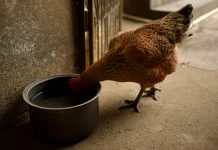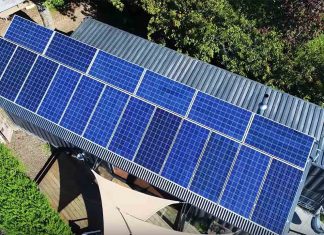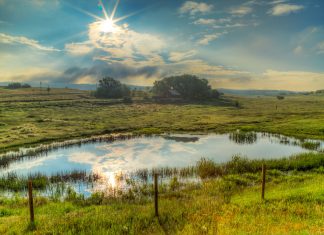If you’re raising livestock for meat, then you’ll need to know how to properly butcher and process the animals. In this blog post, we’ll cover some of the basics of slaughtering and preparing your meat for storage or consumption. Whether you’re new to this process or just need a refresher, read on for some helpful tips.
Deciding When To Butcher Your Livestock
Homesteaders have the decision to make when raising animals for meat as to when exactly they should butcher them. It is important to decide at a consistent time that works best for homesteading sustainably. Generally, the suggested age for homesteaders to butcher their livestock is about one year old and it can vary, depending on whether an animal grows slower or faster in maturity. The homesteader should carefully assess elements such as health, size and feed requirements when deciding when to butcher livestock in order to maintain a sustainable homestead.
– Pig: 10 months to 1 year
– Cattle: 18 months to 2 years
– Chicken: 5 months
– Rabbit: 8 weeks
– Lamb: 4 to 6 months
The Best Way To Kill Your Animal For Consumption
Living off-grid and homesteading often means taking full responsibility for the sustenance of your family. One part of off-grid living is humanely killing an animal for food, be it poultry, pork, or beef. To accomplish this it is important to do research and practice ahead of time if possible. Before any off-grid kills are done it is important to choose an animal that is ready for harvest – perfect for your off-grid kitchen. Review and understand the anatomy of the animal and become aware of any potential areas on its body that may require special attention. Also, ensure you have access to sharp knives and tools that will help you efficiently and humanely dispatch the animal as quickly as possible with minimal suffering. By taking these steps off-grid living can include ethically obtaining meat from animals found in nature or raised at home with minimal pain when later killed for consumption.
1. Pig: Use a captive bolt pistol to stun the pig, then cut its throat to quickly and humanely bleed it out.
2. Cattle: Use a sharp knife or slaughtering gun to make an incision in the jugular vein of the cattle’s neck, allowing for blood loss and death within seconds.
3. Chicken: Quickly decapitate with a sharp knife or cleaver, providing an instant death that is painless for the bird.
4. Rabbit: Use a quick snap of their necks by firmly grasping them around their midsection while pushing down in one swift motion with your other hand behind its head near its ears so you can break their neck at once without causing any undue suffering on the animal’s part.
5. Lamb: Using a stunning device followed by cutting through both carotid arteries & jugular veins will deliver death within seconds and is considered to be one of the most humane methods available when it comes time to harvest this type of livestock animal from your homestead or off-grid kitchen table. If you ever ran out of this meat especially during special occasions, fret not because you can still buy lamb from we speak meat.
Hanging And Gutting The Carcass
Hanging and gutting a carcass is an integral sustainable homesteading practice. Not only does it provide the homesteader with healthier, higher quality meat than a grocery store, but by doing it yourself, you can ensure that no part of the animal goes to waste. The proper technique ensures as little damage to muscle tissue as possible for optimal flavor and texture in the end product. Furthermore, since sustainable homesteading involves learning how to make use of all parts of the animal — not just lean cuts of meat — hanging and gutting is an essential skill for any sustainable homesteader.
Skinning The Animal
For homesteaders, skinning an animal is a necessary process for sustainable food production. It must be done carefully and with respect for the animal as homesteaders strive to get the most out of every part of the creature. Without proper skinning techniques, homesteaders may not be able to use all parts of the animal, which would lead to wastefulness. Skinning must also be done quickly so that it remains sanitary and keeps all parts of the animal safe for human consumption. With care and precision, homesteaders can turn an otherwise small creature into nutritional and useful resources that help keep body and soul nourished.
Pig:
- Make an incision from the base of the pig’s neck to its anus, being careful not to puncture any organs or intestines.
- Use your fingers to loosen the skin from the meat, starting at the neck and working your way down to the hindquarters.
- Once the skin is loosened, use a knife to cut around the legs and head.
- Finally, grab hold of the skin and pull it off of the pig.
Cattle:
- Make an incision down the belly of the cow, from the chest to the anus.
- Use your fingers to loosen the skin from the meat, being careful not to puncture any organs or intestines.
- Once the skin is loosened, use a knife to cut around the legs and head.
- Finally, grab hold of the skin and pull it off of the cow.
Chicken:
- Cut off the head and feet of the chicken.
- Cut a slit through the skin on the neck and peel the skin away from the chicken, making sure to keep the skin intact as much as possible.
- Once the skin has been peeled back, use a knife to cut the skin around the base of the chicken’s tail.
- Hold onto the chicken’s legs and pull the skin down and off of the bird’s body. Be careful not to tear the skin.
Rabbit:
- Start by making an incision from the rabbit’s anus to the base of its tail.
- Use your fingers to separate the skin from the underlying meat.
- Once you’ve got the skin loosened, use a knife to carefully cut around the legs and head.
- Finally, grab hold of the skin and pull it off of the rabbit.
Lamb:
- Make an incision down the belly of the lamb, from the chest to the anus.
- Use your fingers to loosen the skin from the meat, being careful not to puncture any organs or intestines.
- Once the skin is loosened, use a knife to cut around the legs and head.
- Finally, grab hold of the skin and pull it off of the lamb.
Cutting Up The Meat
Learning how to properly butcher a homestead animal is a crucial off-grid living skill. There are several factors to consider before starting the cutting process, such as determining the desired size of cuts and what type of knife should be used. When it comes to making the slices, precision and caution are key aspects of an effective meat-cutting experience. Removing unwanted fats and tendons can also cause some precarious circumstances, so again, being safe and efficient is the name of the game. For anyone looking to take off-grid living more seriously, mastering cutting up the meat will help elevate your open-air culinary repertoire.
Storing or preserving the meat you just cut
When it comes to off-grid homestead life, preserving meat is a critical measure to insure sustenance. To properly store freshly-cut meat, the cut pieces should be cooled off and wrapped in parchment paper or similar material, then covered with an airtight container for long-term cold storage. While frozen or refrigerated options may be available off-grid, proper wrapping of the cuts is key to preventing any unwelcome guests from making it home along with your meat. When done properly, off-grid homesteaders can successfully preserve their cut meats and enjoy them at a later time without sacrificing taste or quality.
Butchering your livestock at home can be a daunting task, but with the right preparation and resources, it doesn’t have to be. Through careful research on when to slaughter your animal, the appropriate killing method, gutting and skinning techniques, and finally cutting up the meat for storage or freezing; you can safely and effectively butcher your livestock humanely and efficiently. With these steps as guidelines, you are on your way to becoming an expert livestock butcher in no time. So get started today by considering each step carefully, doing your research, and finally taking action to ensure that you can support yourself or even your small business with homegrown meat!














